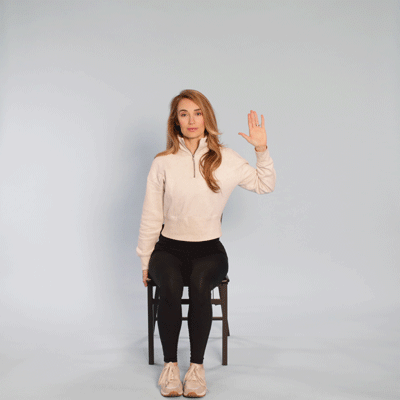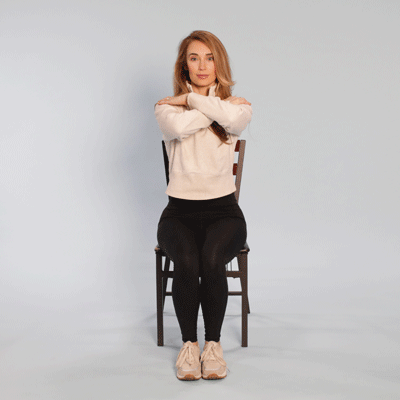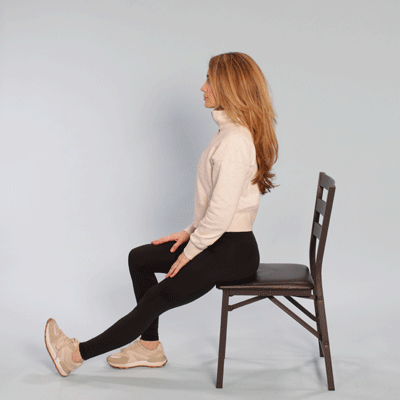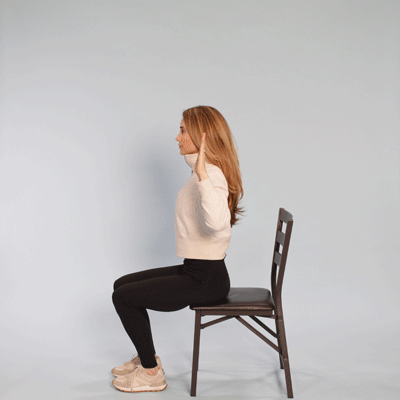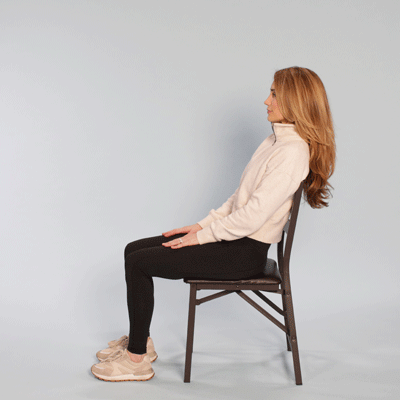A variety of factors including injury, inflammation, and activity can cause back pain in seniors. Seated stretching is one strategy that may help seniors prevent or manage their back pain.
Back pain affects many people and typically becomes
However, some older adults may have limited mobility or other conditions that make standing or floor exercises difficult. Seated stretches can help someone get the benefits of stretching without the challenge of balancing or sitting on the floor.
This article will give examples of seated back pain stretches, discuss safety considerations, and explain when to consult a doctor.

When stretching, begin slowly and gradually increase repetitions and duration over time. A person should not hold stretches for a long time if they are new to
The following seated stretch options require a sturdy and safe chair.
Seated leaning stretch
To perform this stretch, follow these steps:
- Sit up straight in a sturdy chair.
- Lift the left arm above the head, reaching toward the ceiling.
- Slowly reach and bend toward the right side of the body.
- Hold the stretch for several seconds, then switch sides and repeat.
Trunk rotation stretch
To perform this stretch, follow these steps:
- Sit up straight in a chair.
- Cross the arms and rest hands on opposite shoulders.
- Gently rotate the upper body to one side while keeping the hips in place. Do not rotate to the point of discomfort.
- Hold the stretch for a few seconds, and then switch sides and repeat.
Seated hamstrings stretch
To perform this stretch, follow these steps:
- Sit on the edge of a chair with feet flat on the floor.
- Extend both legs so they are straight, with heels resting on the floor.
- Reach toward the toes. Consider keeping the head above the chest to help prevent lightheadedness.
- Hold the stretch for several seconds, and then repeat.
Seated single-leg hamstrings stretch
To perform this stretch, follow these steps:
- Sit on the edge of a chair with feet flat on the floor.
- Extend one leg so it is straight, with the heel resting on the floor.
- Reach toward the toes. Consider keeping the head above the chest to help prevent lightheadedness.
- Hold the stretch for a few seconds, then switch sides and repeat.
Seated ceiling reach stretch
To perform this stretch, follow these steps:
- Sit up straight in a chair.
- Clasp the hands together above the head and palms facing the ceiling.
- Slowly stretch upward and reach toward the ceiling.
- Hold the stretch for several seconds, and then repeat.
Marionette stretch
To perform this stretch, follow these steps:
- Sit on a chair and rest against the backrest. Place hands in the lap.
- Slowly sit up straight, as if a string is pulling the top of the head toward the ceiling. Keep the gaze forward and chin tucked. Stop at a gentle pull in the muscles.
- Hold the stretch for a few seconds, and then relax and repeat.
It is important to consult a doctor before starting a new stretching or exercise routine. This is crucial, as not all exercises and techniques are appropriate for everyone.
While stretching, there are some general safety tips to keep in mind, such as:
- warming up the muscles with a short walk or other activity before stretching
- not holding a position to the point of pain, as stretching should not hurt
- holding the head above the heart while stretching to help avoid lightheadedness
- breathing regularly without holding the breath
- not holding positions for a long time if new to stretching exercises
- starting slow and gradually building up hold times and repetitions
- avoiding bouncing during a stretch
It is best to consult a doctor or physical therapist before trying a new exercise routine.
Someone should also speak with a doctor if
- a fall or injury followed by back pain
- tingling or numbness
- pain that does not get better with medication or prescription medication
- fever, difficulty with urination, or unintended weight loss with back pain
- numbness, weakness, or pain in the legs with back pain
Older adults can experience back pain for many reasons. Stretching is one strategy that may help someone prevent or manage their back pain.
Seated stretches can be a more accessible stretching option, especially for older adults who have difficulty with standing or floor exercises.
Always consult a doctor or physical therapist before starting a new exercise routine. When stretching, warm up first, avoid painful positions or holds, and breathe regularly.

